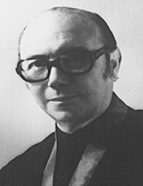

However, two key aspects set him apart as a historian:
Regional Focus: Cruz devoted dozens of works, from monographs to articles and edited sources, to the history of Porto and the northwest of Portugal. This included studies on the Reguengo of Bougado, where he was born, to which he dedicated several notable works ( Casas de lavoura do reguengo de Bougado… , 1978 and O Reguengo de Bougado , 1982). His deep connection to this region led Carlos Alberto Ferreira de Almeida (1934–1996) to describe him as a "telluric historian" in 1981, when he was honoured at the Faculty of Arts and Humanities of the University of Porto.
Passion for Diplomatic Palaeography: Among the many disciplines he taught at the Faculty of Arts and Humanities of the University of Porto, Diplomatic Palaeography was always his cherished field. He produced two provisional editions of an album of documents ( Álbum de Paleografia (edição provisória) , 1968) during a period when such albums were flourishing, including the final edition by Torquato de Sousa Soares (1903–1988) in 1961 and the first editions by Avelino de Jesus da Costa (1908–2000) in 1966 and Eduardo Borges Nunes (1924–2008) in 1969. Additionally, he wrote a detailed theoretical and conceptual introduction to the field ( Observações sobre o Estudo da Paleografia em Portugal , 1966-1967). The interruption of his academic duties in the 1970s prevented him from completing the sequential volume of his doctoral thesis, which dealt with a subject that would later draw attention from historians such as Maria Helena da Cruz Coelho, Maria José Azevedo Santos, Saul António Gomes, and Armando Alberto Martins, as well as philologists and historians of philosophy like Aires Augusto Nascimento and José Francisco Meirinhos. Likewise, the definitive edition of his Álbum and the palaeography manual he had planned remained unrealised until 1987, when the manual was published late in his life. Nevertheless, his enthusiasm for historical sciences never waned, as seen in works such as A Reforma pombalina e as ciências auxiliares da História [The Pombaline Reform and the Auxiliary Sciences of History] ( Revista de História das Ideias , 4/2, pp. 101–112, 1982), among others.
This work is financed by national funds through FCT - Foundation for Science and Technology, I.P, in the scope of the projects UIDB/04311/2020 and UIDP/04311/2020.
